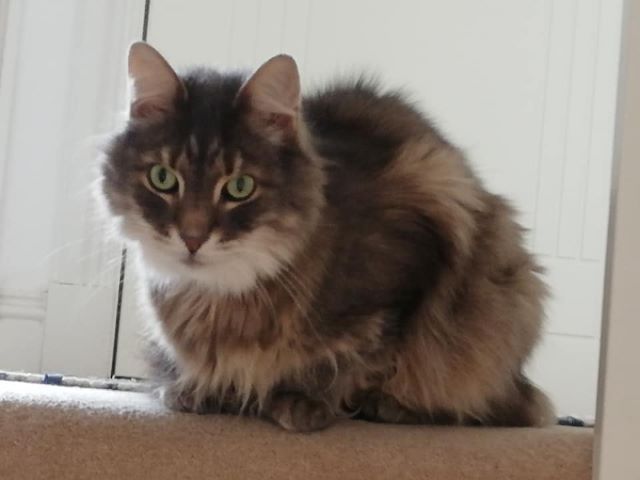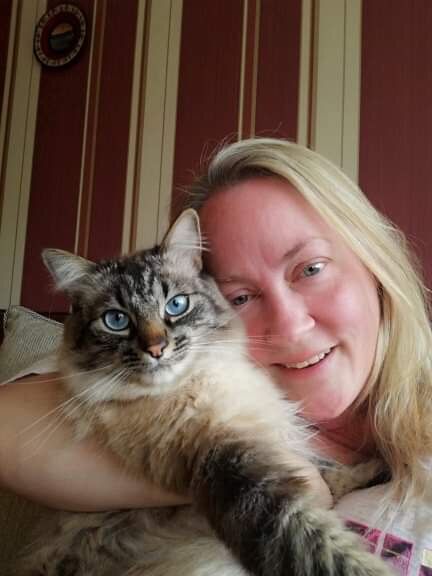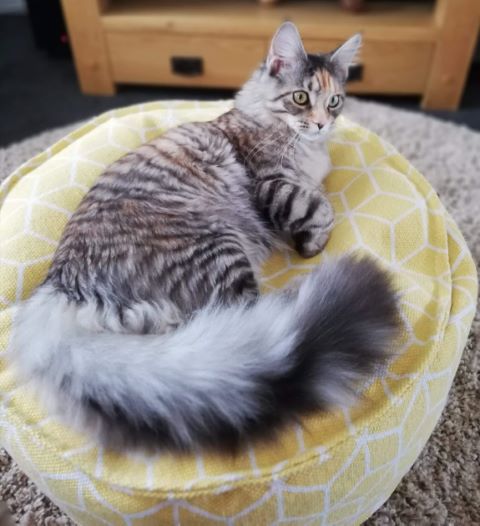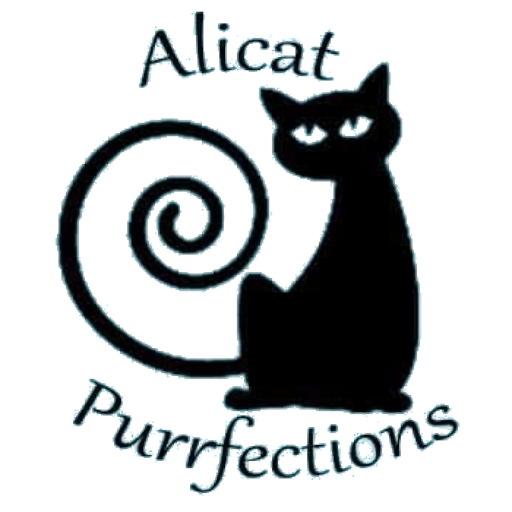There are many popular cat Breeds and all have their different characteristics. It is therefore best to do your research and find one that matches your requirements.
As a cat sitter its one of the perks getting to meet so lots of cats, many of which are Pedigree Breeds. They are all beautiful and a delight to take care of in their homes. Generally, Pedigree’s are indoor cats, however you can have a catio or cat proof your garden to keep them safe.
Here are just a few of the Breeds I have taken care of at Alicat Purrfections cat sitting service throughout West Lothian.
Ragdoll – The Ragdoll is a docile, sweet, and happy to relax for a good cuddle session, the loving Ragdoll will even greet their humans at the door when they come home. If you’re looking for a companion you can’t find a much better choice than one of these easy-going felines.
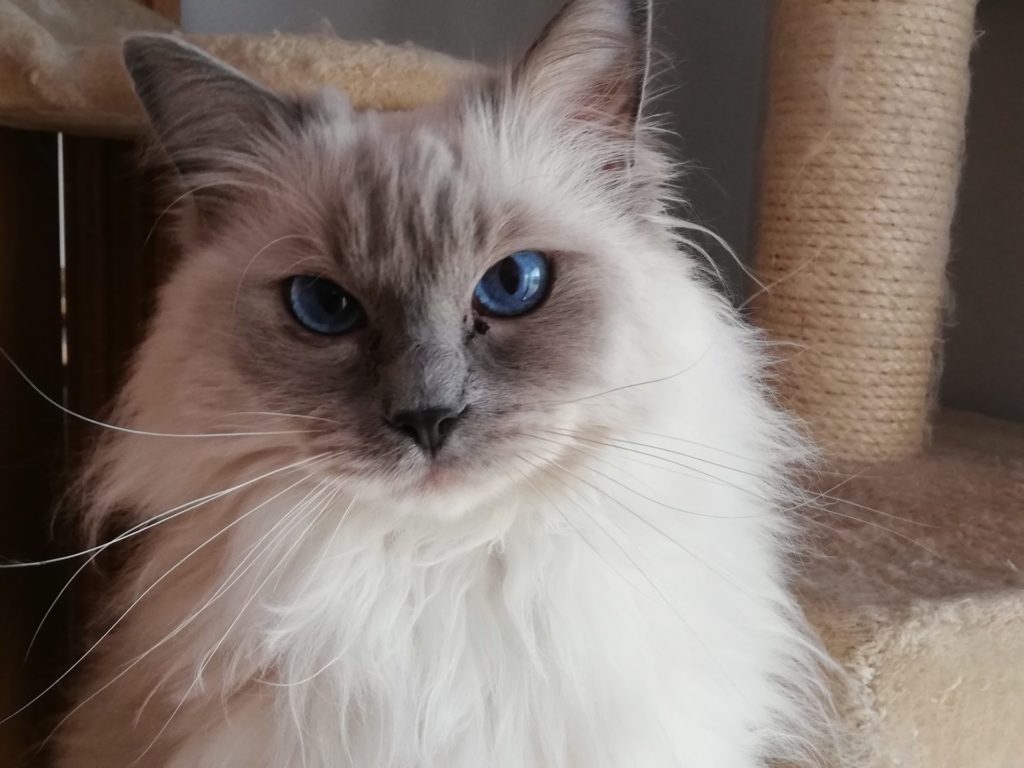
dav
In the family of cat breeds, Ragdolls are among the younger siblings. The cats were first developed by breeder Ann Baker in Riverside, California, in the 1960s. Baker’s foundation stock consisted of Josephine, a domestic longhair whose white coat concealed the genes for either a seal mitted or black tuxedo pattern, and various other longhaired cats of unknown ancestry that she owned or found in her neighbourhood.
Baker selected for cats with gentle, placid personalities, large size, and beautiful long coats characterized by a Himalayan pattern, the name for the “points” seen on Siamese-type cats. The result was a cat she called the Ragdoll, for its propensity to flop happily into the arms of anyone who picked it up. Later, Persians, Birmans and Burmese may also have contributed to the Ragdoll’s development.
Baker made many unusual claims about the cats’ development, including alien influence, CIA experiments, and infusions of human genes, but that is all they are: claims, with no basis in fact. Other people had begun breeding Ragdolls as well. They broke away from Baker and formed the Ragdoll Fanciers Club International, with the goal of standardizing the breed and achieving recognition by cat registries.
The Cat Fanciers Association began registering the cats in 1993 and gave them full recognition in 2000. Most registries now recognize the breed, including the American Cat Fanciers Association and The International Cat Association. Ragdolls are not outcrossed to any other breeds.
Unlike many cats, Ragdolls are notable for collapsing into the arms of anyone who holds them, even if they are cradled on their back. They love their people, greeting them at the door, following them around the house, and leaping into a lap or snuggling in bed whenever given the chance. They often learn to come when called or to retrieve toys that are thrown for them.
The word most often used to describe them is docile, but that doesn’t mean they are inactive. They like to play with toys and enter into any family activities. With positive reinforcement in the form of praise and food rewards when they do something you like, Ragdolls learn quickly and can pick up tricks as well as good behaviours such as using a scratching post. In a small, sweet voice, they remind you of mealtime or ask for petting but are not excessively vocal.
Ragdolls have nice manners and are easy to live with. You will find a Ragdoll on your sofa or bed, but generally not much higher than that. He prefers to stay on the same level with his people rather than the highest point in a room.
Norwegian Forrest Cat – The Norwegian Forest cat (Norwegian: Norsk skogkatt or Norsk skaukatt) is a breed of domestic cat originating in Northern Europe. This natural breed is adapted to a very cold climate, with a top coat of glossy, long, water-shedding hair and a woolly undercoat for insulation. Although this is uncertain, the breed’s ancestors may have been a landrace of short-haired cats brought to Norway by the vikings around 1000 AD, who may also have brought with them long-haired cats, like those ancestral to the modern Siberian and Turkish Angora. During World War II, the breed became nearly extinct until efforts by the Norwegian Forest Cat Club helped the breed by creating an official breeding program. It was registered as a breed with the European Federation Internationale Feline in the 1970s, when a local cat fancier, Carl-Fredrik Nordane, took notice of the breed and made efforts to register it. Currently, the Norwegian Forest breed is very popular in Norway, Denmark, Sweden, Iceland and France.
It is a big, strong cat, similar to the Maine Coon breed, with long legs, bushy tail, and sturdy body. The breed is very good at climbing, since they have strong claws, they are one of the few domestic cats capable of descending a tree head first.
Siberian – The Siberian is a powerful looking cat and one that is not only very agile, but capable of jumping up to great heights too. They are medium to large size cats and they boast having lovely large paws which adds to their overall charming appeal. They have luxurious coats and lovely personalities to match their good looks. Since they first arrived in the UK, they have found their way into the hearts and homes of many cat lovers and for good reason. Not only is the Siberian a lovely looking cat, but they boast having gentle, playful and affectionate natures along with an extremely impressive purr.
The Siberian is an ancient breed with early references to similar cats dating back to 1000 AD. There are written records of these cats that go back to the 13th century, however, the first Siberians were only exhibited in 1870 and then in 1884 at shows that were held in Madison Square Gardens in the States. Over time, these large and attractive cats could be seen in Siberian forests, around markets and living as street cats in Siberia.
As Russia opened its borders to other countries, many people started to domesticate these feral cats and pretty soon they became known as the Aboriginal Cats of Russia and were exhibited at many shows. The very first breed standard was drawn up in 1987 and cats started to be exported to other parts of the world during the 1990s.
Although considered an ancient breed, the Siberian was only introduced to the UK in 2002 and since then, they have gained a big fan base among breeders and owners alike. The Siberian is a very attractive, large cat with a glorious semi-long coat and they are known to have delightful, playful and gentle natures which has seen them become a popular companion and family pet not only in the UK, but elsewhere in the world too.
They have rectangular bodies that are never too long. However, a cat’s body is medium to large and well-muscled with nice broad chests. Their necks are short, but powerful and legs are nicely in proportion to a cat’s body being moderately long and showing a good amount of bone. Siberians, as previously mentioned boast having very large round paws with tight toes which are nicely tufted adding to a cats overall wild heritage. Tails are broader at the base, moderately long and very well furnished tapering slightly to the tip.
When it comes to their coat, the Siberian boasts having a dense, extremely weather resistant double coat that consists of a thicker top coat and much softer undercoat. Their coats are semi-long with the hair being shorter over a cat’s shoulders whereas their flowing guard hairs cover a cat’s back, their flanks and upper side of their tails. A cat’s underside and their breeches consist of just the undercoat which is dense and plush. The longer hair around a cat’s neck forms a dense and profuse ruff.
The Siberian is a highly intelligent cat and one that learns new things extremely fast. They enjoy playing interactive games which includes things like chase the ball or fetch. They are known to be quite dog-like in many of their behaviours and have a real fascination with water unlike many other breeds. Although they form strong bonds with their owners and love playing interactive games with them, a Siberian is good at amusing themselves and will play with a toy to keep busy when they are left on their own which is why it’s important to invest in some good quality toys when sharing a home with a Siberian.
As with any other breed, Siberians need to be groomed on a regular basis to make sure their coats and skin are kept in top condition. On top of this, cats need to be fed good quality food that meets all their nutritional needs throughout their lives which is especially true of kittens and older cats. Siberians boast having semi-long, dense coats and as such they are quite high maintenance on the grooming front. Cats need to be regularly brushed to prevent knots and tangles forming in their coats. Like other breeds, they tend to shed the most in the Spring and then again in the Autumn when more frequent brushing is usually necessary to keep on top of things. Their coats are a lot lighter during the summer months, but they still need to be brushed several times a week to keep things tidy.
Long-Haired Siamese – The Balinese cat breed really is a long haired Siamese – it was developed from the long haired kittens that occasionally appear in Siamese litters.
These long haired kittens were thought of as accidental, but in the 1940s two US cat breeders began developing them into their own distinct breed.
Balinese look like Siamese cats with long silky coats and distinctive plume-like tails.
Balinese are known for their intelligence, their friendly, inquisitive and playful nature, and their striking beauty. They are also often vocal and rather demanding.
The Balinese does not have any links with Indonesia (their Siamese relatives are actually originally from Thailand), the name was created as the breeders thought the cat’s grace and elegance mirrored that of the dancers in the Temples of Bali.
The breed doesn’t have a long history. They were first introduced in the 1940s in America after long-haired Siamese kittens appeared in a litter. This spontaneous mutation caused the breeders to strive towards nurturing more of this variety, and the first Balinese breeding program was introduced in the 1950s.
While some people may simply view the Balinese as a long-haired variety of the Siamese Cat, this caused uproar amongst the purists and is one of the reasons they are no longer referred to as ‘Long-haired Siamese’ within breeding circles.
The Cat Fanciers’ Federation gave the Balinese official championship status in 1961.
The Balinese has a medium length, silky coat, and while they do shed seasonally, their coat does not require too much maintenance. They don’t have an undercoat and this means they are not so prone to getting tangles or mats. A good brush out of any loose, dead hair around once a week should be enough to keep their coat in good condition.
Snowshoe – Snowshoes (often, mistakenly, called Snowshoe Siamese) were first developed in the United States through the breeding of Siamese cats with American Shorthairs.
Their body shape combines the stocky build of the American Shorthair with the body length of the Siamese, and like their Siamese forebears they have short coats and brilliant blue eyes.
Their distinguishing features are their four white paws, from where they get the name Snowshoe, and a white inverted ‘V’ over their noses.
British Shorthair – One of England’s oldest cat breeds, the British Shorthair actually has Roman roots. It seems that when the Roman forces invaded England during their period of empire expansion, they brought along cats to protect their food supplies from rodents. The cats colonized the area and were a common street cat for centuries.
In the late 1800’s, a British man named Harrison Wier is credited with becoming the first cat breeder. He is responsible for domesticating the common British street cat and through a breeding program and selective crossbreeding, created the cat we know today as the British Shorthair.
The breed nearly ceased to exist during the hard economic times of World War II. Post-war, however, the remaining bloodlines were crossed with other breeds including the Domestic Shorthair, Russian Blue, and Persian breeds to preserve their existence.
The first breed registry to recognize the British Shorthair was the American Cat Association in 1967. Other organizations followed suit including the International Cat Association in 1979 and the Cat Fanciers Association in 1980.
While being sociable and pleasant, these cats are easy keepers. The British Shorthair is not overly demanding when it comes to grooming or attention, and they’re not a very vocal breed.
The breed features dense, plush short hair—with more hair per square inch than any other cat breed. Your cat will benefit from brushing several times a week to remove loose hairs and dander, while preventing hairballs.
In spring, these cats will lose more fur as they shed their winter coat, so you may need to brush them more frequently during this time period.
Most people find that the British Shorthair matures from a playful kitten into a dignified yet sociable adult cat. Don’t expect them to grow to full-size overnight, though. The British Shorthair is slow to mature; on average, these cats reach full-size by about the age of three, but some don’t fully mature until the age of five. These cats aren’t likely to spring into your lap and they don’t particularly like to be held or carried, but they often do enjoy the company of their human family members and will often spend time playing or napping the same room.
British Shorthairs have relatively low energy needs and are known to be vertically challenged—they don’t have a reputation for jumping onto counters or other high perches. In fact, this tendency toward inactivity means it’s a good idea to regularly engage your cat in play for his own health and mental stimulation. However, their ability to be content on their own also means that they can tolerate being left home alone for an extended period of time without suffering from separation anxiety.
If you have children or other pets in the home, these cats are likely to be tolerant and accepting—as long as they can have their personal space. Teach children not to forcibly hold or carry your cat, and don’t let other pets harass this cat that likes its dignity.
Nearly everything on the British Shorthair is round—these cats have a round head, bright round eyes, chubby cheeks, round paws, and a tail with a rounded tip. These cats come with many different coat colours, but a striking blue colour is one of the most popular. In fact, this breed is sometimes referred to as the British Blue. The British Longhair retains all the same features but sports a longer coat. Very few cat registries recognize the British Longhair as a separate breed.
It’s interesting to note that the Cheshire Cat of Alice in Wonderland was based on the British Shorthair. The characteristic grin and wise way of the character are trademarks of this breed.
Maine Coon – The Maine Coon is a native New Englander, hailing from Maine, where they were popular mousers, farm cats, and–most likely–ship’s cats, at least as far back as the early 19th century.
The first thing you’ll probably notice is that Maine Coons are big–really big! In fact, the record for the world’s longest house cat belongs to a Maine Coon who grew to be over four feet long.
But these kitties have more going for them than size. They’re affectionate without being needy, they’re adaptable, and they’ve kept their hunting instincts, just in case you need a good mouser. If you can handle a whole lot of cat, this kitty might be a perfect addition to your family.
The Maine Coon, as the name implies, hails from Maine, where the breed was known as a popular mouser, farm cat, and ship’s cat, as far back as the early 19th century. They’re a natural breed and little is known of their origins. Some say the Vikings brought them to North America, centuries before Columbus sailed the ocean blue. Others say that they’re the descendants of longhaired cats belonging to Marie Antoinette, sent to America in advance of the doomed queen, who had hoped to escape there. Sea captains may have brought back longhaired cats that then mated with local shorthaired cats. One thing is for sure–the Maine Coon is not the result of a mating between a cat and a raccoon, even if their brown tabby coat and furry ringed tail suggest that biological impossibility. The resemblance is, however, how the cats got the “Coon” part of their name. In fact, Maine Coons who didn’t have the brown tabby coat were called Maine Shags.
The first published reference to a Maine Coon comes from 1861 and was about a black-and-white cat named Captain Jenks of the Horse Marines. A female Maine Coon was named Best Cat in 1895 at a cat show held in Madison Square Garden. In Boston and New York, the home-grown felines were popular exhibits at cat shows, and when the Cat Fanciers Association was formed in 1908, the fifth cat registered was a Maine Coon named Molly Bond. But the invasion of glamourous Persian and exotic Siamese cats from England around the turn of the century spelled the end of the Maine Coon’s popularity for about five decades. Things took a turn for the better in the 1960s, and the Maine Coon Breeders and Fanciers Association was formed in 1968. Today these big, beautiful cats are among the world’s most popular breeds. But what really counts, of course, is that they are the official state cat of Maine.
Despite the length of the Maine Coon’s coat, it has a silky texture that doesn’t mat easily—if you groom it regularly. It is easily cared for with twice weekly combing to remove dead hair and distribute skin oils. Useful grooming tools include a stainless steel comb for removing tangles and what’s called a “grooming rake” to pull out dead undercoat, which is what causes tangles when it’s not removed. Use it gently, especially in the stomach area and on the tail. Maine Coons are patient, but they don’t like having their hair pulled any more than you do. Check the tail for bits of poop stuck to the fur and clean it off with a baby wipe. Bathe a Maine Coon as needed, which can range from every few weeks to every few months. If their coat feels greasy or their fur looks stringy, they need a bath.
If you would like to book Alicat Purrfections to take care of your cats any time you can not be there, check out these reviews to give you peace of mind you have made the right choice https://alicatpurrfections.co.uk/alicat/reviews/


